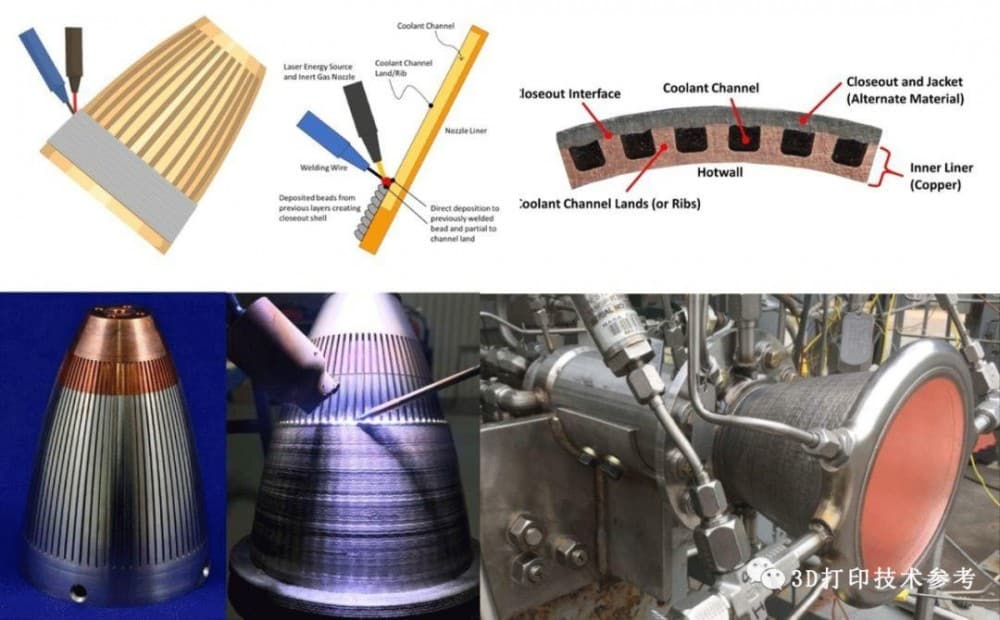In recent years, additive manufacturing technology has shown a sustained and rapid development trend. Military powers have conducted research on additive manufacturing technology to accelerate its application in the development and maintenance of various types of weapons and equipment. With the continuous optimization and improvement of the manufacturing process, applicable materials, equipment processing capabilities, technical standards, etc., the additive manufacturing process will be more widely applied and expanded to the design, development, and production of more weapons and equipment and its key components.
Comprehensive analysis of the research progress of additive manufacturing technology in recent years, and typical examples of foreign military material manufacturing applications, it is foreseeable that in the future, significant breakthroughs will be made in eight aspects and become the main direction of weapon equipment additive manufacturing technology application. In this issue, we introduce the first aspect: breaking through the design limitations of complex systems such as engines and improving the performance of weapons and equipment.
With the development of the aerospace field, the performance requirements of complex systems such as engines are getting higher and higher, and the difficulty of product development will also increase significantly. It is difficult to meet the demand using traditional design and manufacturing models. The advantages of additive manufacturing technology in the design and manufacture of complex systems will make it widely used in the development and production of engines and other equipment. In recent years, the foreign military has applied additive manufacturing technology to the manufacture of complex systems such as rocket engines and jet engines, which not only simplifies the design process, but also realizes the design requirements that cannot be met by traditional manufacturing methods, greatly shortening the production cycle and Production costs, while improving weaponry performance. Next, we introduce a few typical cases.
▌Realize the rapid and low-cost development of the world’s first electric liquid rocket engine
In 2016, American Rocket Labs developed the world’s first liquid engine that uses an electric pump to deliver propellant-“Rutherford”. More than 75% of its components are made of additive materials and can be produced in 3 days. Due to the reduction of a large number of complicated pipelines, valves, gas generators, and other devices in the gas turbine pump system, the complexity and manufacturing costs can be greatly reduced, the reliability can be improved, and rapid mass production is facilitated. As of July, the company has printed 100 Rutherford rocket engines.

▌Realize the innovative design of rocket engine nozzle
The external structure of the rocket engine nozzle looks simple, but its internal structure is very complicated. In 2018, NASA Marshall Space Flight Center used laser direct deposition of metal wire (LWDC) to achieve precise closure of the nozzle coolant channel, and at the same time form a support structure at an appropriate location, which achieved the innovative design of the rocket engine nozzle. The manufacturing cycle has been shortened from months to weeks.

▌ GE uses additive manufacturing technology as an important means of engine design and manufacturing
In 2017, GE adopted the design and manufacturing method for additive manufacturing to complete the production of T901-GE-900 turboshaft engine prototypes. A large number of additive manufacturing components were used in the engine, one of which was made by the original The assembly of 51 sub-components has reduced the weight of the T901 engine by 20%. After testing, its performance has also been improved.

END
At present, this application direction mainly carries out key technical researches such as the design of complex structural parts, design for additive manufacturing, optimization of honeycomb structure design, and reliability improvement of additive manufacturing. In the future, complex systems such as rocket engines and aero engines will be designed and produced using additive manufacturing, and more complex systems will gradually adapt designs for additive manufacturing, breaking through the limitations of traditional design and achieving performance improvement and innovative development. For more content, please pay attention to extended reading.

